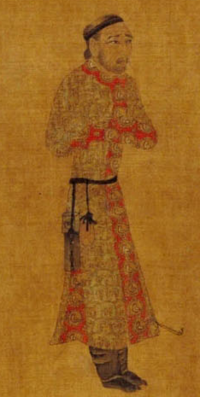- (in English and Standard Tibetan) Old Tibetan Chronicle, P.T. 1287
- (in Chinese) New Book of Tang, vol. 230
| Gar Tongtsen Yulsung | |||||||
 Gar Tongtsen Yulsung | |||||||
| |||||||
| Political offices | ||
|---|---|---|
| Preceded by | Lönchen of Tibet 652 – 659? | Succeeded by |
| Preceded by | Lönchen of Tibet 661 – 667 | Succeeded by Shanglon Tromo (acting) |
| International | |
|---|---|
| National | |
